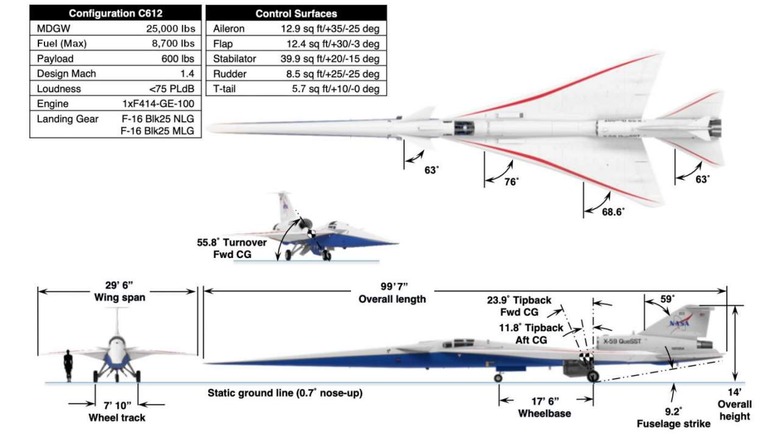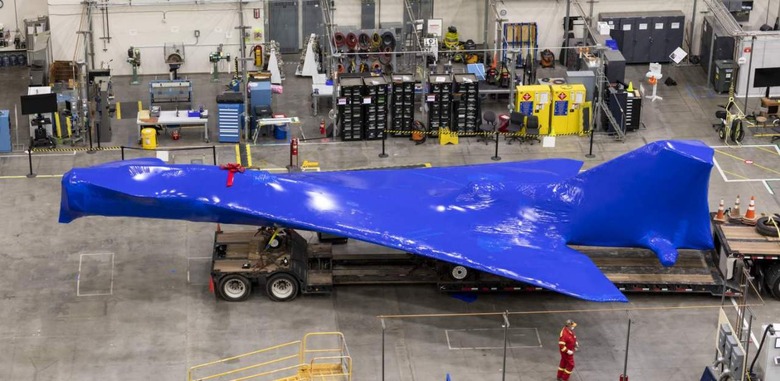NASA's Slippery X-59 Supersonic Jet Aims To Revolutionize Air Travel
NASA has been in the news quite a bit of late. Most recently it has captured global attention with its James Webb Space Telescope launch and journey to its new orbit, while it is also making headlines with its Artemis mission to the moon and beyond along with its ongoing scientific exploits on Mars and elsewhere. This week NASA has a bit of news that remains enthralling despite being relegated to a more Earthbound endeavor. Its stunning X-59 experimental Quiet SuperSonic Technology (QueSST) jet has reached another milestone on its way to lifting the ban on commercial supersonic flight over land.
When people think of supersonic passenger jets, the retired Concorde springs to mind. However, even though the Concorde was able to reach speeds of Mach 2.04, it wasn't ever allowed to operate at those speeds over land. This blunted its full potential somewhat, but given that sonic booms generate enormous amounts of sound energy – around 110 decibels – understandably, no one wants to constantly hear the unexpected sound of an explosion or thunderclap while they go about their daily business. NASA's X-59 QueSST jet would substantially reduce this sound to what it describes as a softer "thump".
Validation testing milestone reached
Engineers at the NASA Glenn Research Center recently tested a small-scale model of the X-59 in an 8- by 6-foot Supersonic Wind Tunnel to validate the computer simulations of how the shape of the craft would channel wind around its design. The aim was to visualize NASA's boom-reduction technology and see if this aligned with what NASA's computer models predicted its performance would be. The model of the X-59, which measures around a foot and a half in length, was put through weeks of testing with special cameras and sensors capturing the shock waves. The schlieren images that were captured showed a match in position and strength of the shock waves that had been predicted by the earlier computer models, which is a significant milestone to seeing the X-59 take flight in the real world.
"With the X-59, we want to demonstrate that we can reduce the annoying sonic booms to something much quieter, referred to as 'sonic thumps,'" said John Wolter, lead researcher on the X-59 sonic boom wind tunnel test. "The goal is to provide noise and community response data to regulators, which could result in new rules for overland supersonic flight. The test proved that we don't just have quieter aircraft design, but that we also have the accurate tools needed to predict the noise of future aircraft."
Next-gen supersonic passenger flight one step closer to reality
The next steps for the QueSST project will see the X-59 model travel to Tokyo, Japan in March for further wind tunnel verification testing. NASA's engineers will work with the Japan Aerospace Exploration Agency and Boeing to complete this phase. In the meantime, NASA and Lockheed Martin are continuing work on the airframe in preparation for the initial test flights expected to take place in late 2022. Once airworthiness has been demonstrated and that its quiet supersonic technology performs in the air as modelling has predicted, the team will then test the aircraft with community overflights. With nothing to replace the Concorde when it was retired in 2003, the next generation of commercial supersonic flights looks like it might be within reach after looking like its time had passed.


